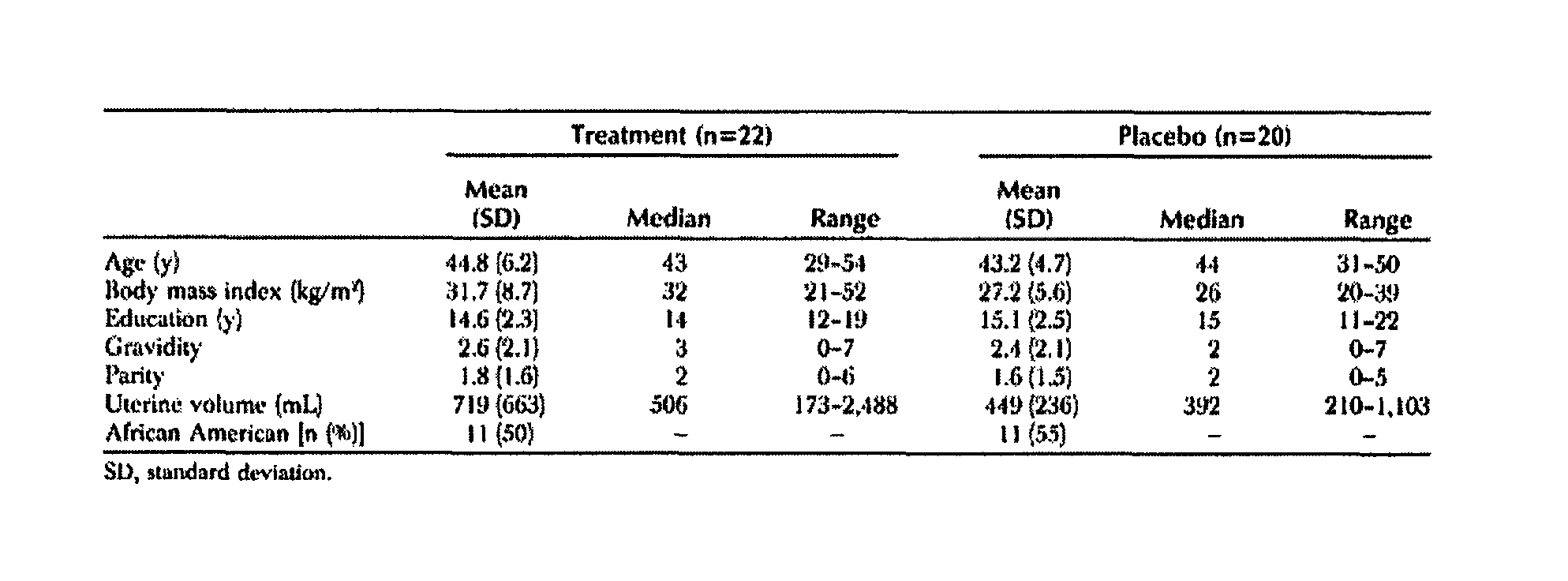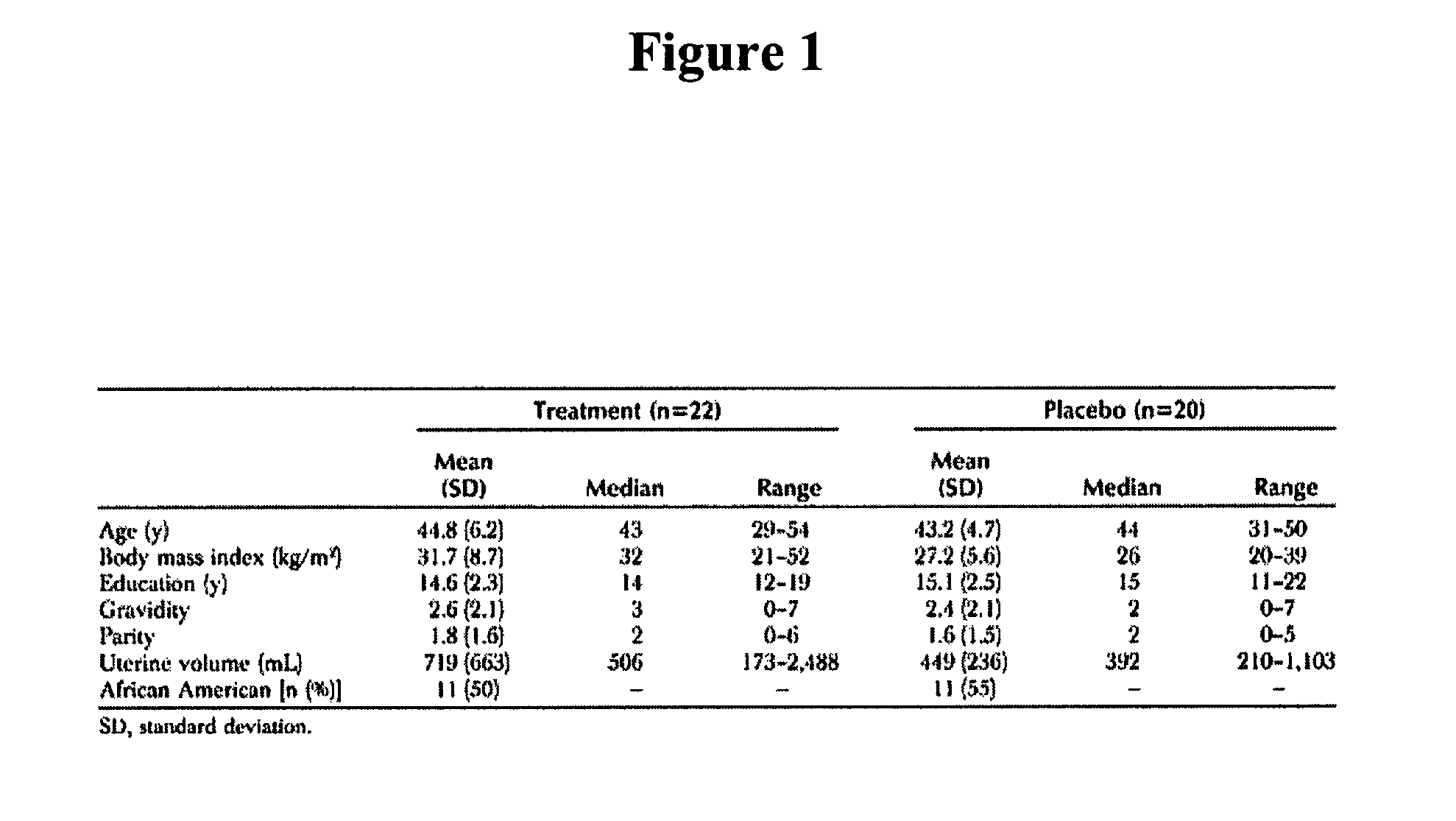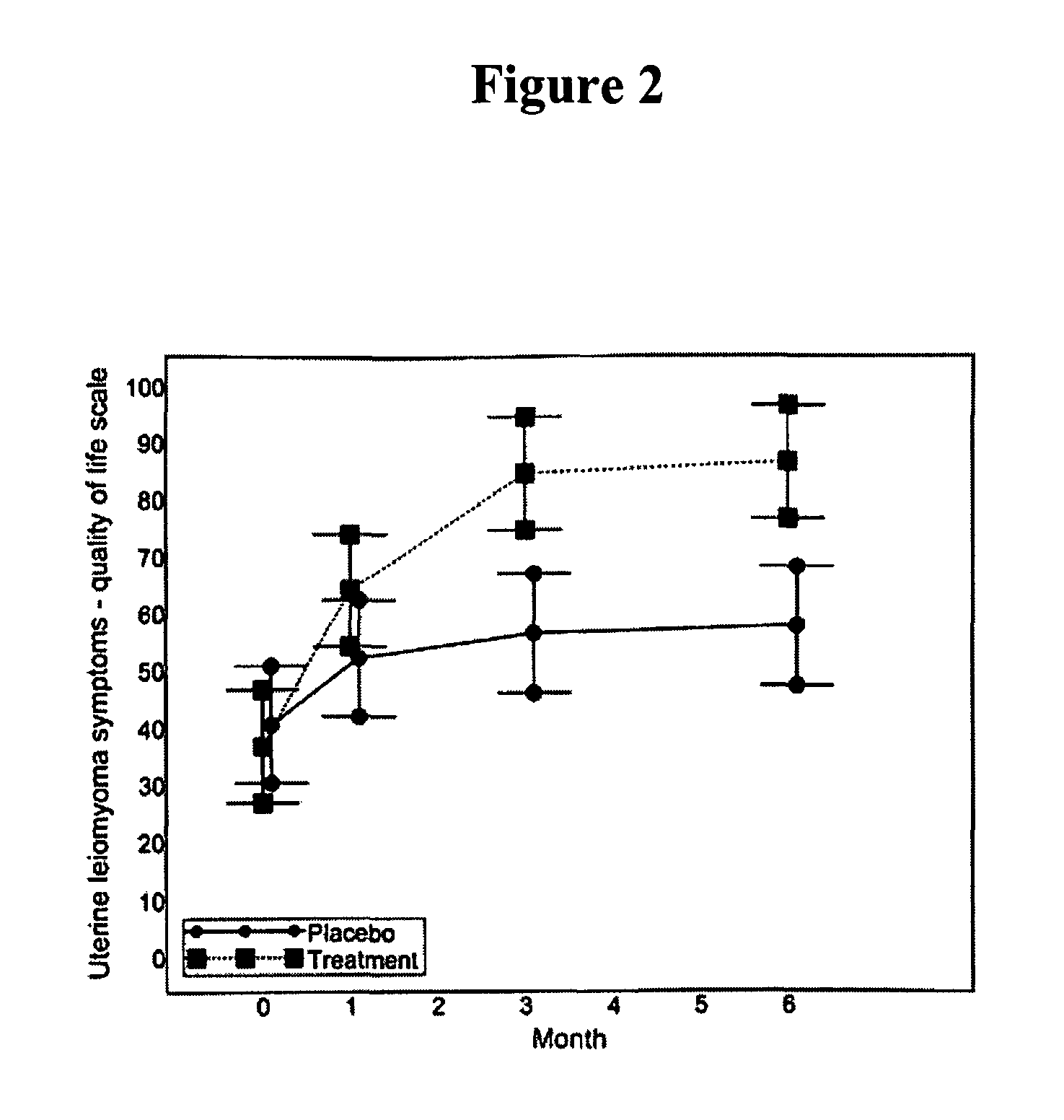Methods, dosing regimens and medications using anti-progestational agents for the treatment of disorders
a technology of progesterone and treatment method, applied in the direction of elcosanoid active ingredients, drug compositions, extracellular fluid disorders, etc., can solve the problems of frequent urination, troublesome symptoms, anemia and fatigue, etc., to avoid or lessen the occurrence or severity of adverse side effects, and reduce the dosage level. , the effect of reducing the number of side effects
- Summary
- Abstract
- Description
- Claims
- Application Information
AI Technical Summary
Benefits of technology
Problems solved by technology
Method used
Image
Examples
example 1
2.5 mg Mifepristone for the Treatment of Gynecological Disorders
[0288]A clinical study of the effectiveness of low doses of mifepristone, specifically 2.5 mg, for the treatment of uterine leiomyomata was conducted. The study was conducted at a single site in Rochester, N.Y.
[0289]Subjects: Inclusion criteria for the study included that subjects be (i) female; (ii) 18 years of age to premenopausal; and (iii) willing and able to give informed consent and comply with study requirements; and have (i) at least moderate symptoms of menorrhagia and / or pelvic pain / pressure; (ii) a total uterine volume greater than or equal to 160 cubic centimeters (cc) by ultrasound measurement; (iii) at least one leiomyomata ≧2.5 cm in size; (iv) a score of equal to or greater than 39 on the Uterine Fibroid Symptom and Quality of Life Scale; (v) declined standard treatment options for symptomatic leiomyomata; and (vi) agreed to use a barrier method (condoms, diaphragms) or other effective non-hormonal metho...
example 2
5.0 mg Mifepristone for the Treatment of Gynecological Disorders
[0304]A study of the effectiveness of 5.0 mg mifepristone in the treatment of gynecological disorders will be carried out in a manner that is similar in all material respects to the 2.5 mg study except that the subjects will be given 5.0 mg mifepristone or placebo for one month. A total of about 40 subjects will be enrolled in the study with about 20 receiving daily 5.0 mg mifepristone and about 20 receiving placebo. When compared to placebo controls, after one month of 5.0 mg mifepristone administration, treated subjects will show, on average, a decrease in blood loss, uterine volume and uterine leiomyomata size, improvements in Quality of Life Scores, and improvements in other symptoms including without limitation, a decrease in the occurrence and / or severity of pelvic pain, a decrease in the occurrence and / or severity of lower back pain, a decrease in the occurrence and / or severity of rectal pain, a decrease in the o...
example 3
1.0 mg Mifepristone for the Treatment of Gynecological Disorders
[0305]A clinical study of the effectiveness of a lower dose of mifepristone for the treatment of uterine leiomyomata will be conducted. The methods will be carried out in a manner that is similar in all material respects to those described in Example 1 except that the subjects will be given 1.0 mg mifepristone or placebo for six months.
[0306]A total of about forty subjects will enrolled in the 1.0 mg study. At the beginning of the study, all forty subjects will have periods of extended bleeding, with larger than average uterine volumes and mean leiomyomata volumes. About twenty subjects will be given 1.0 mg mifepristone to be taken daily. The remaining subjects will be given a placebo medication to be taken daily.
[0307]Following three months of daily administration of 1.0 mg mifepristone, on average, treated subjects will show a decrease in blood loss, uterine volume and uterine leiomyomata size, improvements in Quality...
PUM
| Property | Measurement | Unit |
|---|---|---|
| size | aaaaa | aaaaa |
| volume | aaaaa | aaaaa |
| size | aaaaa | aaaaa |
Abstract
Description
Claims
Application Information
 Login to View More
Login to View More - R&D
- Intellectual Property
- Life Sciences
- Materials
- Tech Scout
- Unparalleled Data Quality
- Higher Quality Content
- 60% Fewer Hallucinations
Browse by: Latest US Patents, China's latest patents, Technical Efficacy Thesaurus, Application Domain, Technology Topic, Popular Technical Reports.
© 2025 PatSnap. All rights reserved.Legal|Privacy policy|Modern Slavery Act Transparency Statement|Sitemap|About US| Contact US: help@patsnap.com



